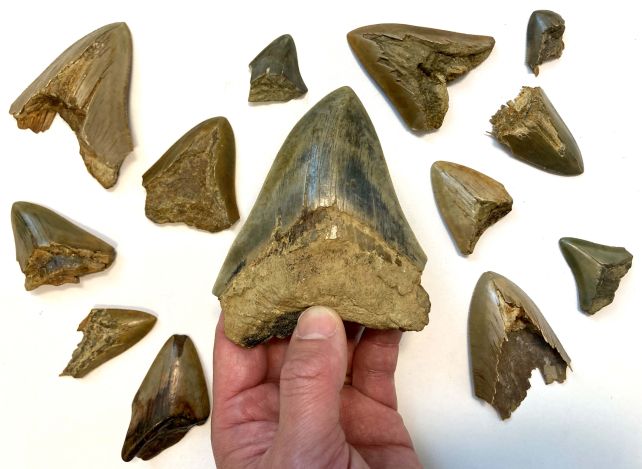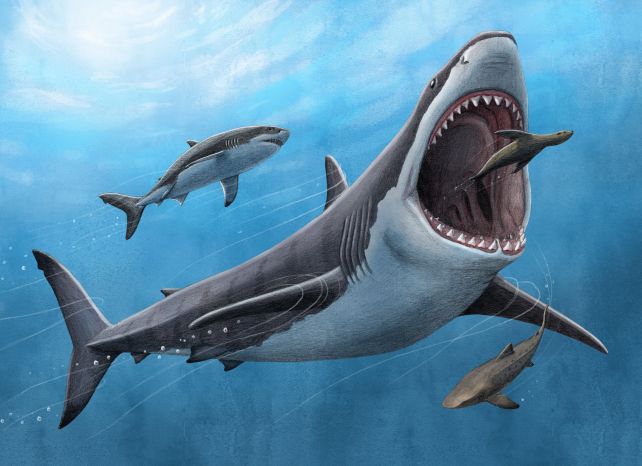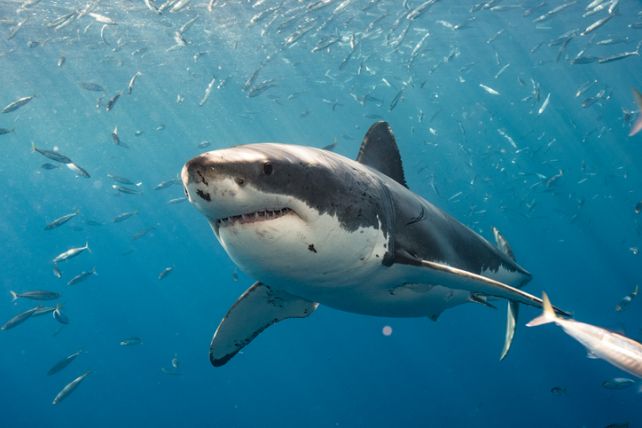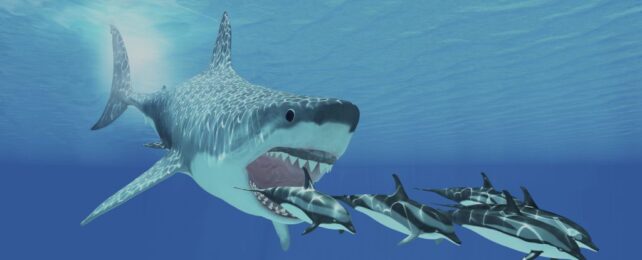The body temperature of one of the mightiest predators ever to stalk Earth's oceans may have contributed to its downfall.
A new analysis of the teeth left behind by megalodon (Otodus megalodon) shows that the extinct giant shark was at least partially warm-blooded, as some sharks are today.
But this trait, which would have given the predators an edge as a hunter, could have left them vulnerable to extinction as the world around them changed.
"Our results show that O. megalodon had an overall warmer body temperature compared with its ambient environment and other coexisting shark species," write a team led by geochemist Michael Griffiths of William Paterson University.
"The gigantic body size with high metabolic costs of having high body temperatures may have contributed to the vulnerability of Otodus species to extinction when compared to other sympatric sharks that survived the Pliocene epoch."
Megalodon holds a place of honor in our collective imagination, and for a good reason. It appears in the fossil record 23 million years ago, and then, 3.6 million years ago, it disappeared. During the 20 million years that it existed on this planet, however, the giant shark is thought to have terrorized the seas.
The traces it left behind have only fueled these ideas. Sharks are mostly built of soft tissue, so all we have of megalodon is a bunch of giant teeth and vertebrae. These tell us that the shark was large, with recent estimates putting its size between 16 and 20 meters (52 to 66 feet) in length. But they don't tell us much else.

We don't know what the shark looked like, whether it was a barrel of muscle and menace like a great white or a sleek wave-glider like a blue shark. We can guess, but guesses will likely be all we have, at least in that regard.
However, one thing about teeth is that, paleontologically, they're excellent time capsules, containing isotopic records of various elements retained in an organism's bone. Stable isotopes in the environment are taken up, usually by ingestion, and replace some of the calcium in teeth and bones, which can help archaeologists and paleontologists learn more about their lives.
In some cases, it can help reconstruct an animal's diet. Griffiths and his team wanted to learn the body temperature of megalodon.
There's an isotope ratio that can do this, fascinatingly. The oxygen isotope composition of phosphate (δ18Op) in bioapatite – a type of calcium phosphate, the mineral that forms vertebrate bones – reveals two key things about an animal. The first is the isotope composition of its body water; the second is temperature.

That's because the fractionation of oxygen isotopes is dependent on temperature. And, in marine vertebrates, the body water composition is in a steady state with the water through which the animal swims – so any deviation between the δ18Op values seen in a warm-blooded animal and a cold-blooded one should reflect the level to which the warm-blooded animal can raise its temperature above the ambient environment.
By carefully measuring this property and comparing it to living animals such as sharks and cetaceans, and animal fossils contemporaneous with megalodon, the researchers were able to reconstruct a temperature profile for megalodon. They found that megalodon could raise its body temperature by around 7 degrees Celsius (12.6 degrees Fahrenheit) – in other words, it was endothermic.
This is seen in some sharks today, like the great white (Carcharodon carcharias), the largest predatory shark alive today. Megalodon doesn't belong to the same family as the great white, Lamnidae, but is thought to belong to the same order, Lamniformes.

Lamnid sharks, of which five species currently exist, are characterized by their fast swimming speeds and partial warm-bloodedness, or regional endothermy – their muscles heat their venous blood. This keeps their swimming muscles and brains warm and improves their metabolisms. They can swim faster, endure colder environments, and hunt and digest food more efficiently.
Scientists have thought that megalodon must have had the same trait. The new research seems to confirm it, finally, with hard numbers, which provides insight into how the huge sharks lived, hunted, and grew to such tremendous size. But it would have come with a price.
"As a gigantic apex predator, O. megalodon would have incurred high metabolic costs imposed by its regionally endothermic physiology and coupled with its top trophic-level diet, as suggested by previous studies, there were likely high bioenergetic demands," the researchers write.
"This precarious energetic balance was perhaps put in peril when productive coastal shelf habitats diminished, and there were accompanying shifts in prey landscapes due to Pliocene sea-level changes. Indeed, prior work has shown regional endothermy to be associated with high extinction risk among large-bodied species, especially when large prey become scarce."
This, the researchers say, shows that even the great megalodon was not immune to climate change; therefore, more efforts should be undertaken to protect the sharks we have while there is still time to do so.
The team's research appears in the Proceedings of the National Academy of Sciences.
